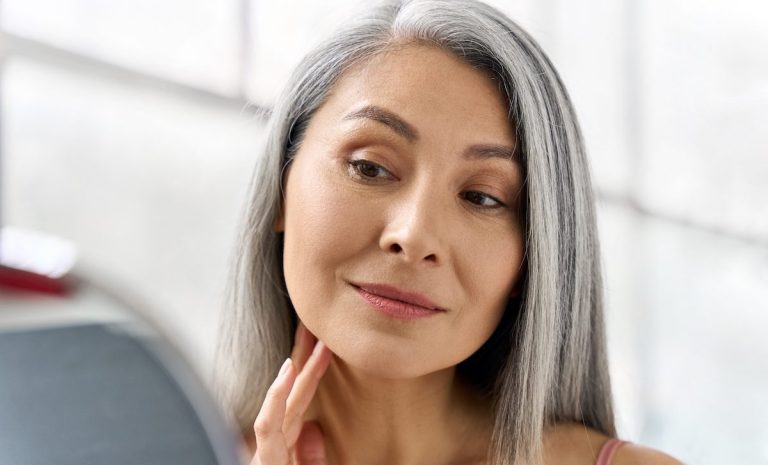Move Over Millennials: The Beauty Industry Wants Buyers With More Spending Power

The beauty industry is constantly seeking out innovative ways to enhance its bottom line.
As a result, the sector is exploring new avenues to increase its revenue, and one significant shift that’s becoming more noticeable is how it approaches advertising. Rather than concentrating solely on inclusivity in terms of race or body type, there’s a rising emphasis on inclusivity regarding age.
The beauty industry is currently placing a renewed emphasis on older women as a means of capturing the attention of one of the wealthiest cohorts of consumers. Brands such as L’Oréal have enlisted several notable industry figures, including Helen Mirren (77 years old), Jane Fonda (85 years old), Viola Davis (57 years old) and Maye Musk (74 years old), who became CoverGirl’s oldest model in 2017. In addition, e.l.f. Cosmetics selected Jennifer Coolidge as an influencer and featured her in its 2023 Super Bowl commercial. These moves represent a concerted effort by the industry to increase consumer spending among older women.
The move can be considered somewhat groundbreaking as historically, advertisements for haircare, skincare and makeup have tended to focus on younger audiences, leaving little to no room for the representation of individuals beyond a certain age range.
Why Marketers and Advertisers Target Young Consumers
To ensure the longevity of their brands, companies have typically targeted younger consumers in their marketing efforts, as this demographic provides a longer window of time in which to establish brand loyalty.
A potential underlying reason for this approach is the thinking that Generation X has been exposed to numerous marketing campaigns over the years and has fewer shopping years remaining. By contrast, millennials and Generation Z are seen as more open to marketing messages, given their longer shopping horizon.
Women Over 50 Lack Representation in the Media
With an oversaturation of representation of millennials and Gen Zers in the media comes underrepresentation and neglect of the Gen X demographic. Nevertheless, Gen X has been found to respond to marketing campaigns that were not designed for them.
According to a 2021 Nielsen report, women over 50 represent only 8% of onscreen television roles, with most of these roles being ancillary mother or matriarch characters. Additionally, a 2020 report called “Frail, Frumpy, Forgotten” by the Geena Davis Institute on Gender in Media analyzed top films from the United States, United Kingdom, France and Germany in 2019 and found that women over 50 were often portrayed negatively in movies, being depicted as senile or physically frail, and more likely to wear unfashionable clothing.
Almost a third had no female characters over 50 at all. It was also found that there was a lack of diversity, with most female characters over 50 being white and cisgender with a complete absence of lesbians and transwomen in that age group.
Why Gen X? Why Now?
In a bid for more consumer dollars today, brands and retailers are going after the demographic that can spend more in the immediate future.
And even though they are a smaller group, Gen X — born between 1965 and 1980 — are noted to spend significantly more than any other generation, shelling out about 44% more than baby boomers and 18% more than Gen Z, even though they make up only 19.8% of the U.S. population.
During the pandemic, Gen Xers saw a 50% increase in their net worth, which was higher than any other generation.
Understanding Women Over 50 and Their Spending Power
Less than 5% of marketing strategies target women over 50, despite their immense financial influence in the country, with a purchasing power of $15 trillion. Understanding their values is crucial for effective marketing to this demographic.
The Gen X demographic is equally at ease shopping online or in-store, ordering prescriptions through an app or in-person at a pharmacy, and seeing a doctor either virtually or in-office. Furthermore, their range of touch points in areas such as beauty, health and shopping, in general, is much wider than that of younger, tech-driven populations or older generations less inclined to use technology. Because Gen X individuals are discerning about their choices and live in a diverse world, there are a plethora of avenues to reach them.
Both Personalization and Deals Still Matter
Even as we continue to navigate through macroeconomic shifts, battling inflation, these findings still apply. According to PYMNTS’ March report, “Consumer Inflation Sentiment: The False Appeal of Deal-Chasing Consumers,” while 59% of middle-income retail shoppers are most likely to prioritize finding better deals, 20% of persuadable customers said that price increases have not impacted their shopping habits, which makes brand loyalty a profitable strategy.
Why Feature Women Over 50 in Beauty
According to a 2021 study, skincare products were the most sought-after by shoppers, closely followed by haircare. Among the respondents, 31% of Gen X and 31% of boomers stated that skincare was the product category they spent the most on at present.
Despite the smaller representation in spend, featuring older models in advertising campaigns can be a great strategy for increasing consumer spending with a demographic that has been typically ignored in traditional advertising, can be reached at different touch points and has more opportunities to spend.
Furthermore, the use of older models in beauty advertisements can foster inclusivity and diversity, while also adding credibility and authenticity to the brand by challenging ageist stereotypes and promoting positive attitudes toward aging — all factors which can also encourage Gen X to spend more on beauty.
For all PYMNTS retail coverage, subscribe to the daily Retail Newsletter.